![]()
![]()

THE GOLDEN AGE OF LITERATURE
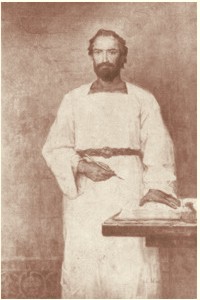
THE GREAT SCHOLAR AND TEACHER
Written by Gevork Nazaryan
After establishing numerous educational institutions in order to teach the revived alphabet, Maštoc‛, with the help of his pupils and under the guidance of Catholicos Sahak, initiated the translation of the Bible and other important pre-Christian and Christian works. The team of scholars of the t'argmanchac‛ or the translation movement, headed by the Catholicos and Maštoc‛, knew that the translation must be as perfect as possible.
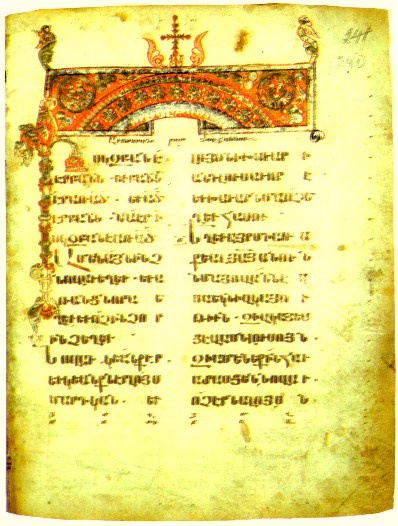
GOSPEL [1053]. MATENADARAN MS NO. 3793 P. 240a.
In fact many linguists consider the Armenian version of the Bible, the most perfect translation of its kind and have named it "The Queen of Translations." After years of devoted service to knowledge and his people, Maštoc‛ made several journeys to the Caucasian Albania [on the eastern side of the river Kur] and created an alphabet for the local inhabitants.
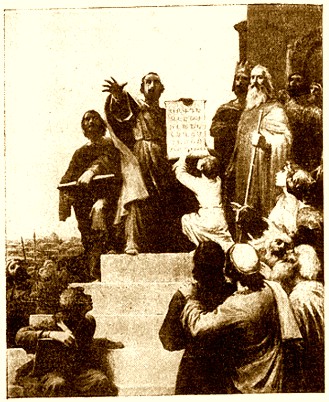
K N O W L E D G
E T O T
H E P E O P L
E !
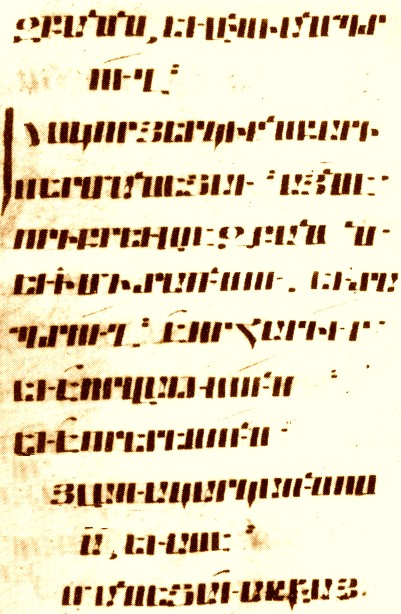
GOSPEL [1160] IN ERKAT'AGIR FONT. MATENADARAN MS NO. 10360, P.
36b.
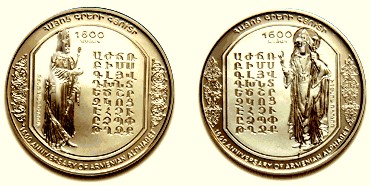
OBVERSE SIDES OF THE BEAUTIFUL COMMEMORATIVE SILVER COINS ISSUED
BY THE CENTRAL BANK OF ARMENIA [CBA] IN 2005-06 UPON THE COMMEMORATION
OF THE 1600 ANNIVERSARY OF THE REESTABLISHMENT OF THE ARMENIAN ALPHABET.
THE TWO GREAT PATRONS AND SUPPORTERS OF THE LITERARY GOLDEN AGE --
[R] CATHOLICOS SAHAK PARTEV [B. 348 - D. 439] WHO INITIATED THE REVIVAL OF
THE
ARMENIAN ALPHABET THROUGH MASHTOTS AND [L] KING VRAMŠAPUH
[REIGNED 389-417] ARSACID.
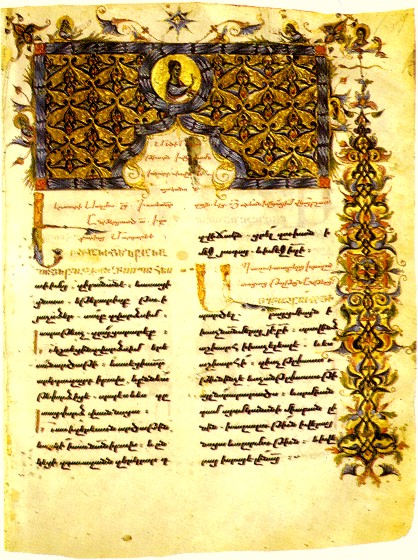
Unfortunately the alphabet died out along with the ancient and proud people of Albania, who after the invasions of the Turkic nomads from Central Asia were mostly killed and driven off of their land. A copy of the Albanian characters created by Maštoc‛ was discovered in the Matenadaran vaults. St. Mesrop also created an alphabet for the people of Iberia [Georgia] which is in use to this very day. St. Mesrop, lived an altruistic life dedicated to a Cause and a sacred mission that for him was greater than his individual self. The Teacher, as he was kindly referred to by the people, passed away on February 17, 440.
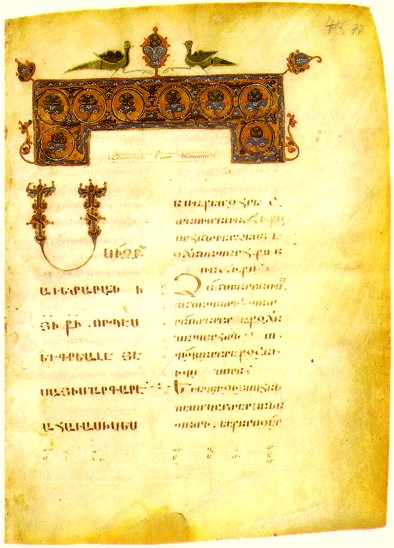
GOSPEL [1071-1079]. MATENADARAN MS NO. 3793 P. 77a.
Koriwn, one of his most beloved pupils who later wrote the biographical work on the life of Maštoc‛, noted "...St. Mesrop found his rightful place in heaven."
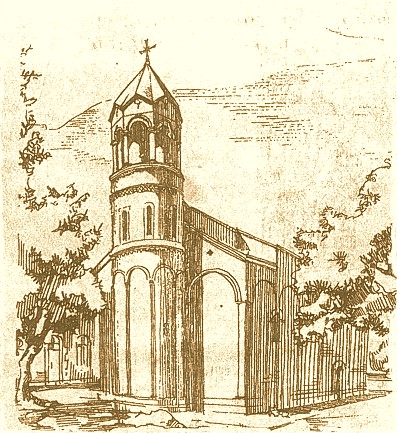
THE TOMB OF THE IMMORTAL ST. MESROP MAŠTOC‛
IN OŠAKAN IS A HOLY SHRINE
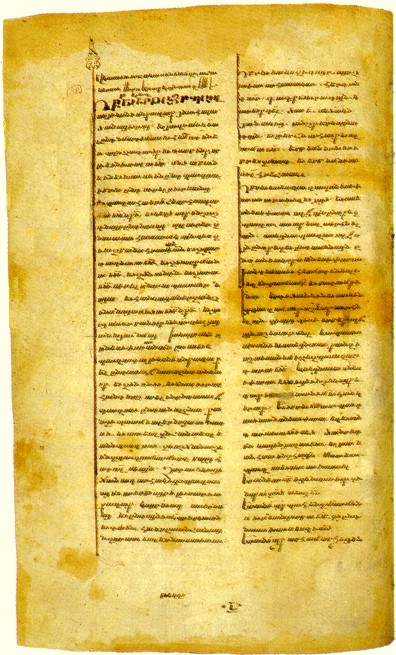
HOMILY [1185-1188]. MATENADARAN MS NO. 3777 P. 240b.
People from every sphere of life, rank and social standing mourned his passing. Maštoc‛ was ceremonially and honorably laid to rest in the town of Ošakan. His tomb, today is a sacred shrine of pilgrimage. Armenians from all over the world come to pay their respect and show homage to the Great Man, who saved and brought back the into circulation the Armenian alphabet, thus forever ending the threat of assimilation and securing lasting eternity for his people.
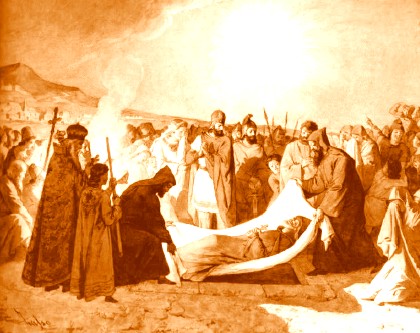
JULIANO ZASSO (1833-1889). INTERNMENT OF ST. MESROP MASHTOTS
IN THE OŠAKAN MAUSOLEUM.
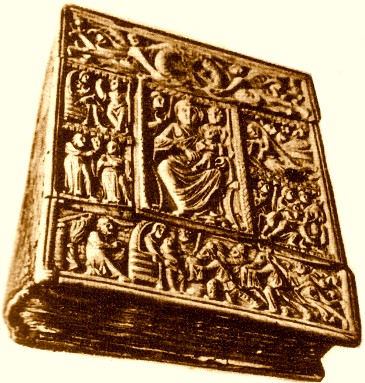
SIXTH CENTURY IVORY COVERED ECHMIADZIN GOSPEL
DEPICTING THE GREAT MOTHER AND THE CHRIST CHILD.
THE SACRED BOOK INCLUDES NUMEROUS ILLUMINATED
MANUSCRIPT PLATES.
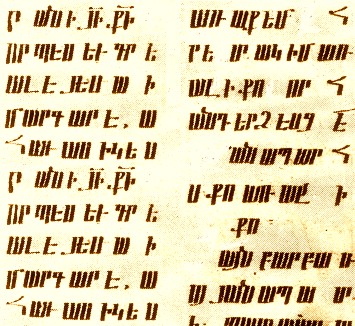
A devout warrior-monk, a missionary, who
devoted his life to public enlightenment -- St. Mesrop Maštoc‛, rightly holds an
important place not only in Armenian History, but more broadly that of world
history and heritage.
T H E G R E A T T E A C H E R' S M E M O R Y I S
I M M O R T A L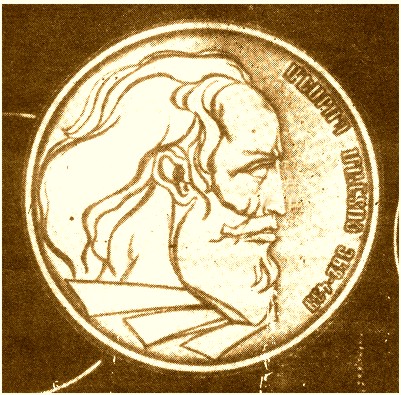
FURTHER READING | HIGHLY RECOMMENDED:
MASHTOZ.ORG -- A
TRULY GREAT SITE
BY MASHTOZ [NAMESAKE OF THE GREAT TEACHER] VAHE LAZARYAN
SPECIFICALLY DEDICATED TO THE ENLIGHTENER
http://www.mashtoz.org
